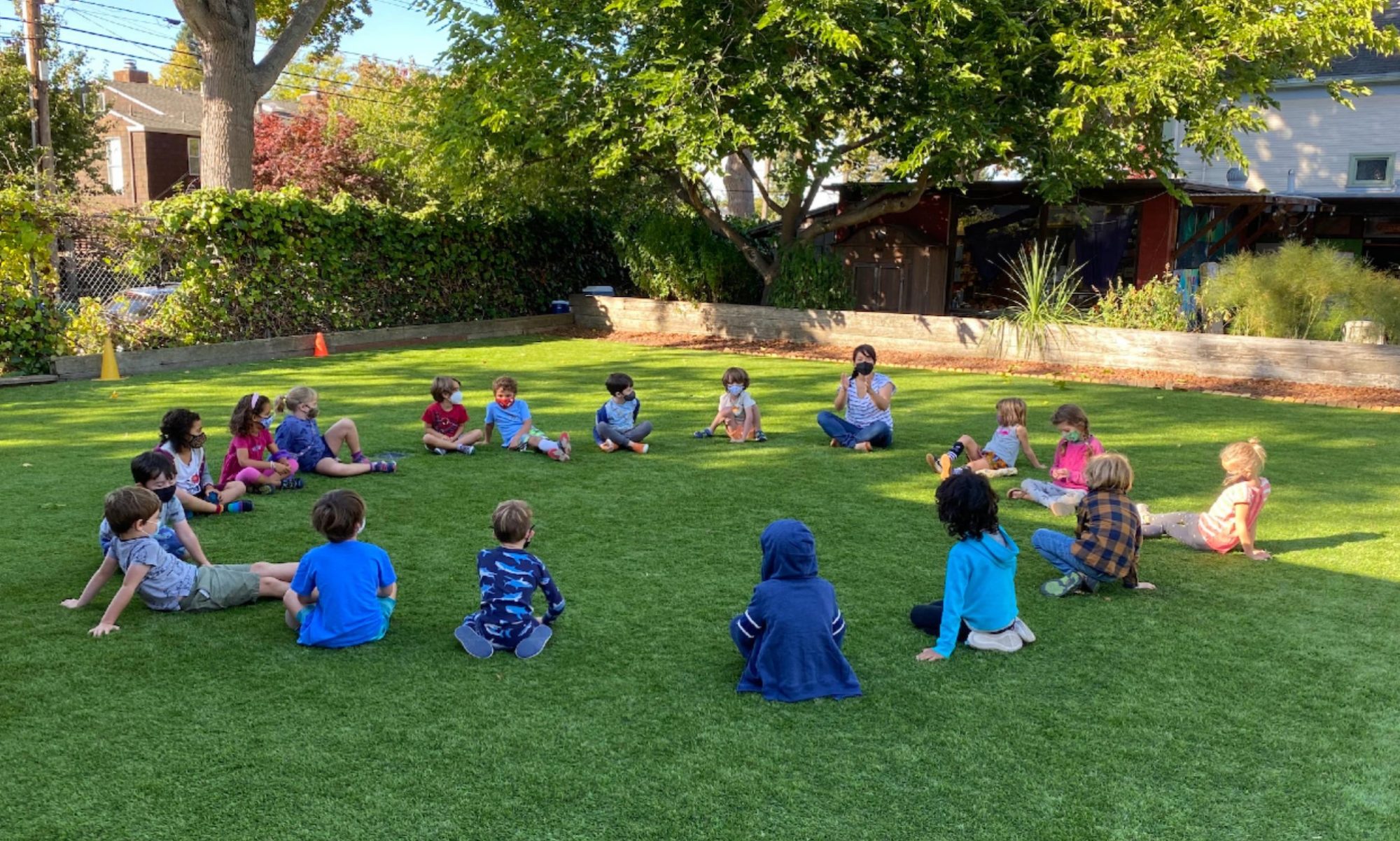Lower Group
Lower Middle Group
Middle Group
Upper Group
Drama and Movement
Music
Visual Art
Spanish
Lunch, Snack & Recess
The Middle Group years are a time when seven, eight, and nine year-old students practice skills with the goal of attaining mastery. They consolidate and integrate ideas through exploration, discussion, and reflection. Gradually shifting from building basic understandings of reading and math, to using the tools they have incorporated to think critically, they learn how to analyze and categorize information. Their thinking becomes more complex as they begin to consider other points of view. This new perspective marks a considerable shift in their problem-solving and conflict-resolution abilities.

Language Arts
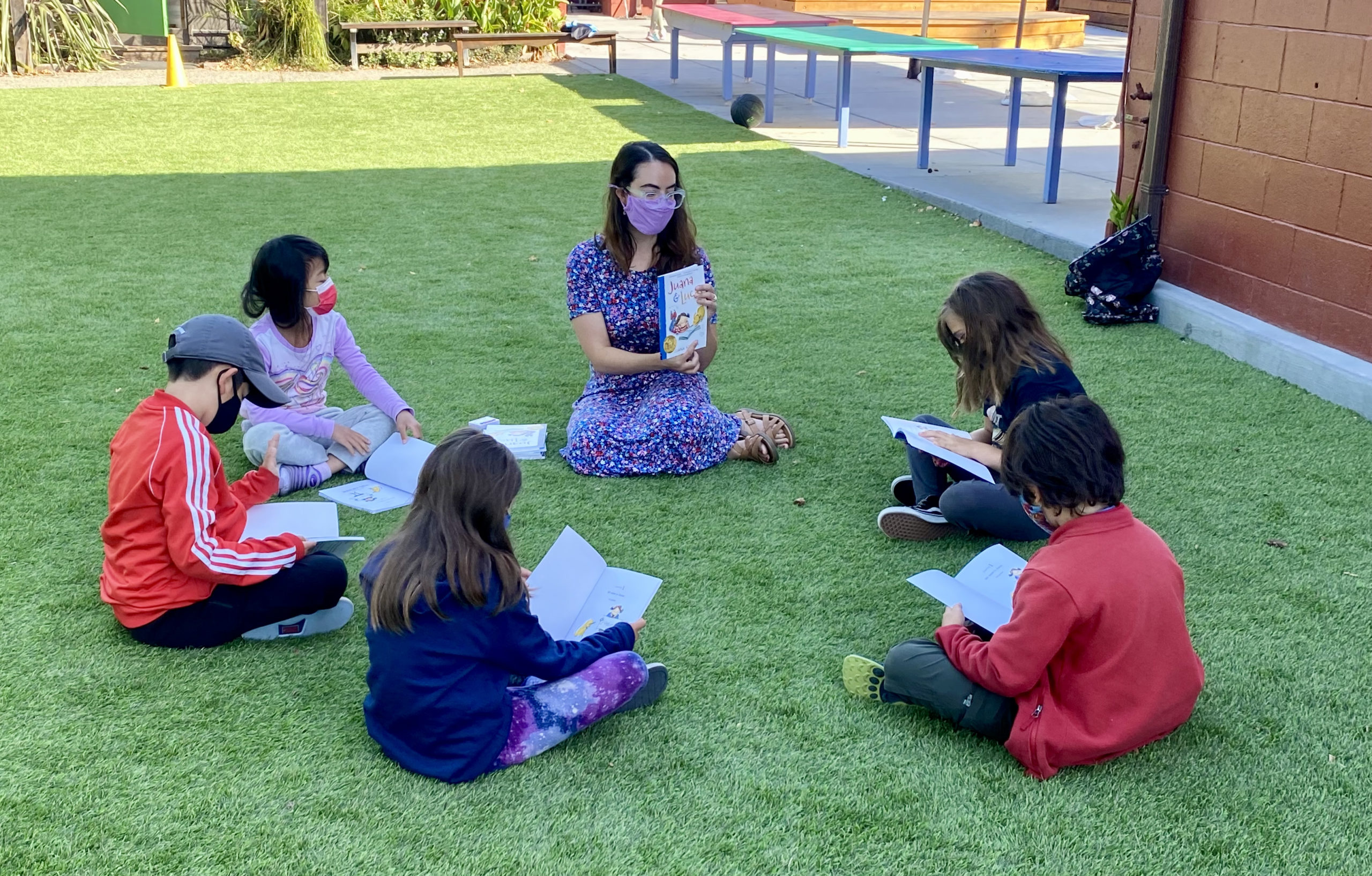
In the Middle Group we consolidate the enjoyment, skill, and fluency of reading begun in Lower and Lower Middle groups. Through a variety of fiction and nonfiction literature, we build more challenging vocabularies and formally introduce children to a variety of literary genres.
In small book groups children practice reading texts at their reading levels, learn to analyze elements of narrative text, and compare and contrast elements within them.
Children respond to their reading by having book group discussions as well as by writing open-ended written responses to the text, such as “I learned,” “I wonder,” “This reminds me of,” and “I made a connection with.” Children make predictions about what might happen next based on what they have learned about the plot and characters so far. They write story maps to describe the setting, characters, main events, problems, and resolution of the book. Children gain fluency while reading chorally, offering the opportunity to read aloud in a safe, supported environment.
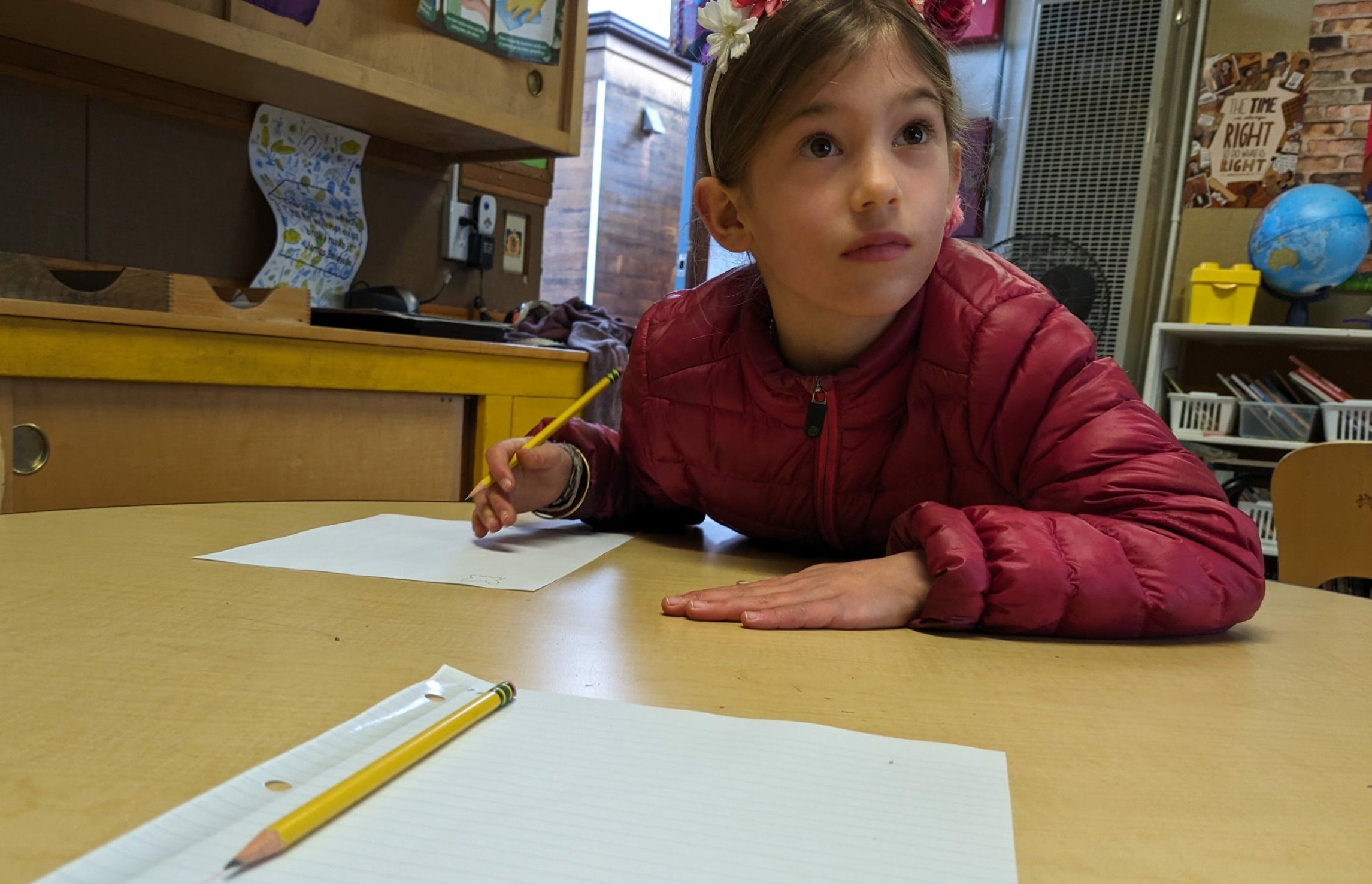
Children write using words from the Word Wall, to which they add words as needed. During weekly “Word Study” lessons, spelling patterns are explicitly taught and practiced, as the children go on “word hunts” looking through familiar books for words that fit the spelling pattern under consideration. They participate in discussions and mini-lessons on the morphology of the language, with explanations about root words, prefixes and suffixes, and base words that come from Latin, Greek, and other languages. This also offers an opportunity to explicitly teach and review phonemic awareness (hearing sounds in words), phonological recording (translating a word into its letter-sound correspondences), and translating sounds into print (spelling).
Children become more familiar with writing when it is a regular and frequent activity. To this end, students keep a Writing Journal where they write weekend reflections to practice their writing fluency and improve their writing stamina. Throughout the year students work on expository, narrative and opinion writing pieces.
Mathematics
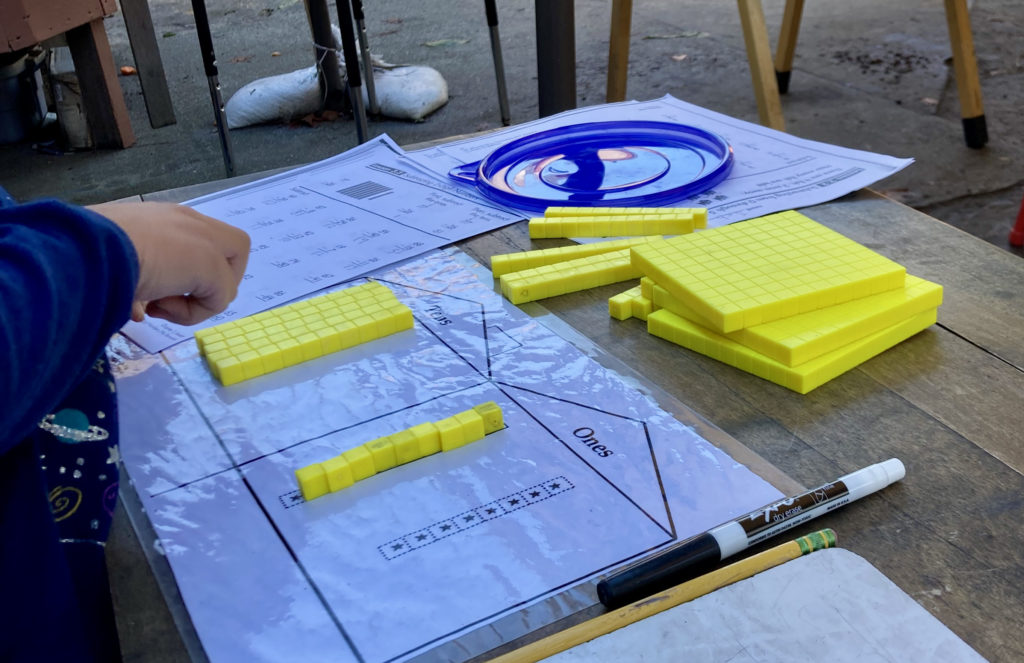
In teaching mathematics, we always begin with as many kinesthetic experiences as possible. We spend time at the beginning of the year becoming familiar with our materials and then dive into using them as tools to discover, illustrate, and cement our mathematical understanding.
In the Middle Group we complete the transition from concrete to abstract representation of mathematical concepts. Over the course of a student’s two years in the Middle Group they study number sense and place value; geometry; early algebra; measurement, including time and money; the four operations: addition, subtraction, multiplication and division, and fractions.
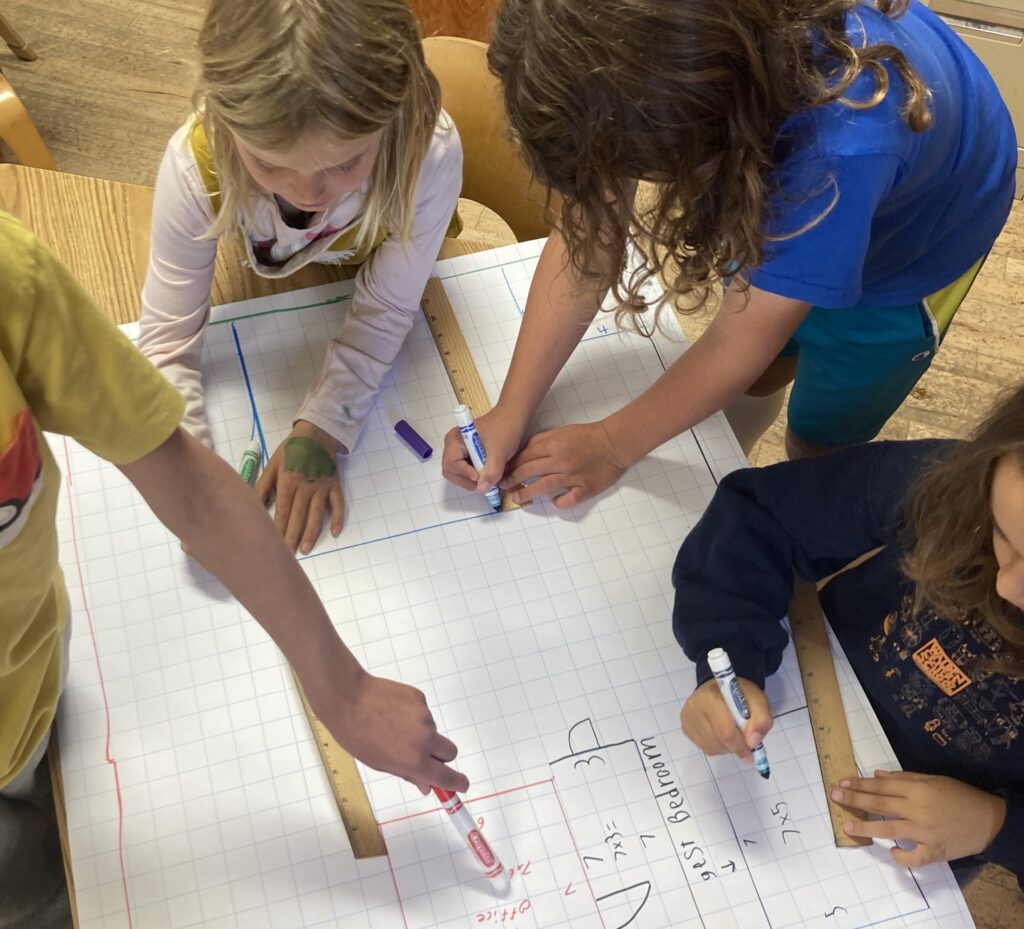
Research shows that successful young mathematicians make pictures in their minds to which they can refer in solving math problems, especially in the area of the four operations. We use specific language and color cueing to help students move from a fully concrete stage of understanding, where they use physical materials to illustrate a mathematical concept, to a fully abstract stage where the concept has been internalized and the children can solve paper and pencil problems with ease.
Learning at Walden is a really engaging experience where you don’t feel like you’re being taught, but you feel like you’re being engaged in a process of discovery. -Eva Goodriend-Reaño, Parent & Former Student
Science
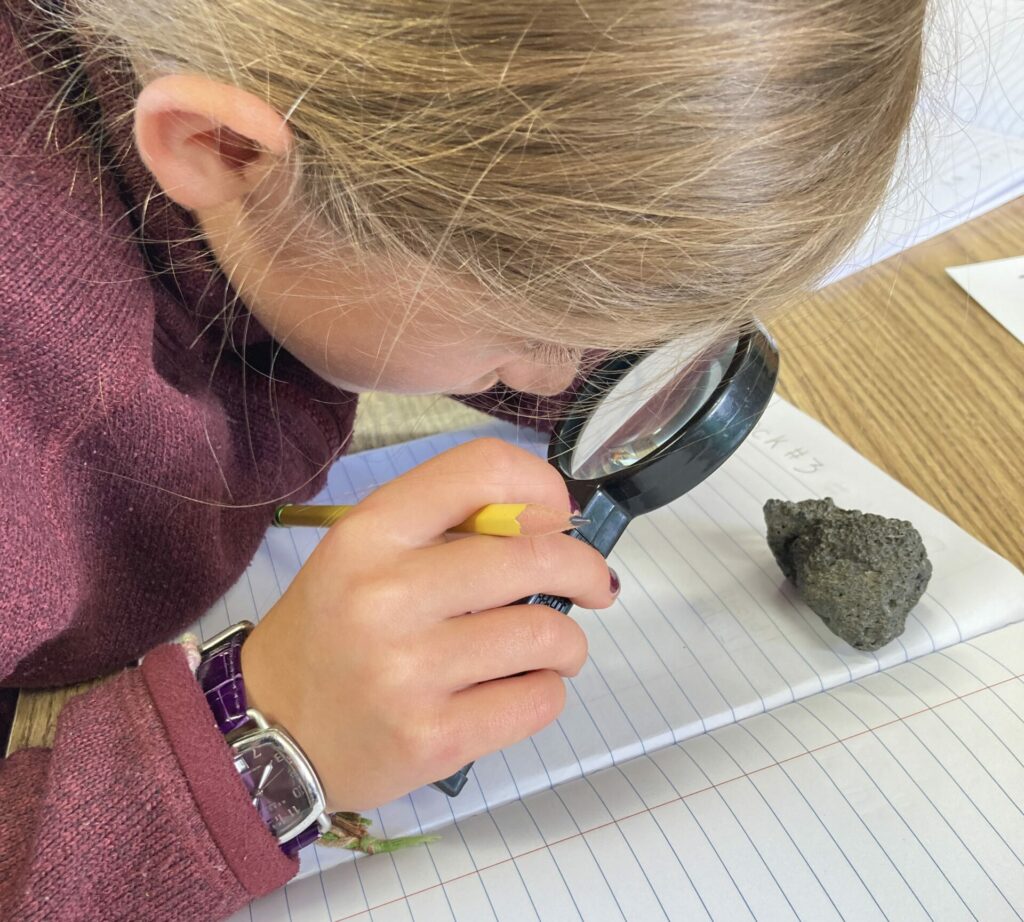
Our Science curriculum is largely based on observation and discovery. We balance research with hands-on experiments. We notice, guess, create, respond, measure, compare, imagine, redesign, chart, graph, and draw all about our experiences with the natural and physical world around us. As part of our yearly Science Fair, students design an original experiment, following the scientific method, and present the results of their investigation to the class.
Within each Science unit, learning opportunities are created that will hopefully form the building blocks for their later science education:
- Learning to use some of the basic tools common in making scientific observations such as rulers, magnifying glasses, microscopes, thermometers, droppers, etc.
- Describing attributes and ordering, sorting and classifying by attribute.
- Learning to pay attention to the details while keeping the big picture in mind.
- Making detailed observations, collecting data, and describing as well as quantifying changes observed.
- Using and creating graphic structures to help organize data, like tables and charts.
- Becoming familiar with a variety of tools for displaying data to help in seeing patterns and connections, as in diagrams and graphs.
- Understanding the importance of mathematics and writing in science.
Social Studies
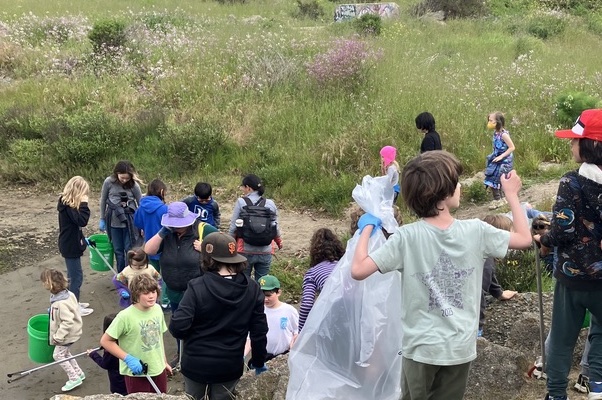
The overall goal is to help children gain knowledge and cultural understanding of our own country as well as a sense of the world at large. We teach social studies by choosing a theme incorporating the children’s interests. In the past, these themes have included ancient cultures, the Miwok and Ohlone people of the Bay Area, and the history and background of songs of protest and change. One year, students designed a mural incorporating what they have learned about life and mythology in ancient Egypt, while others have created “mummies” and intricately decorated sarcophagi. Other years we focus on learning about organizations that are committed to social justice such as the Black Panther Party and Black Lives Matter. Students learn about these organizations including their connections. Students work together to incorporate what they have learned into their home, school and neighborhood communities.
Social studies is a natural place to integrate literature, music, dance, and art; we consult with the different arts teachers to integrate curricula during these units. Each year, children read biographies of famous historical figures, including presidents, artists, scientists, and others who have contributed to our nation and world; they write a piece about the person, or describe to the class how the person’s actions and courage impacted the world. We study U.S. and world geography in alternating years. Children learn about map skills by studying different regions of the U.S. and the names of the states and their capitals. While learning the capitals of the states and our nation, children begin to learn about the different branches of government. Learning about the grid system on many maps, they can identify specific locations. They begin the unit by creating maps of the classroom, their rooms, and the school, and continue by designing maps of imaginary countries, complete with map keys, compass rose, and distance scale.
Social Emotional Learning
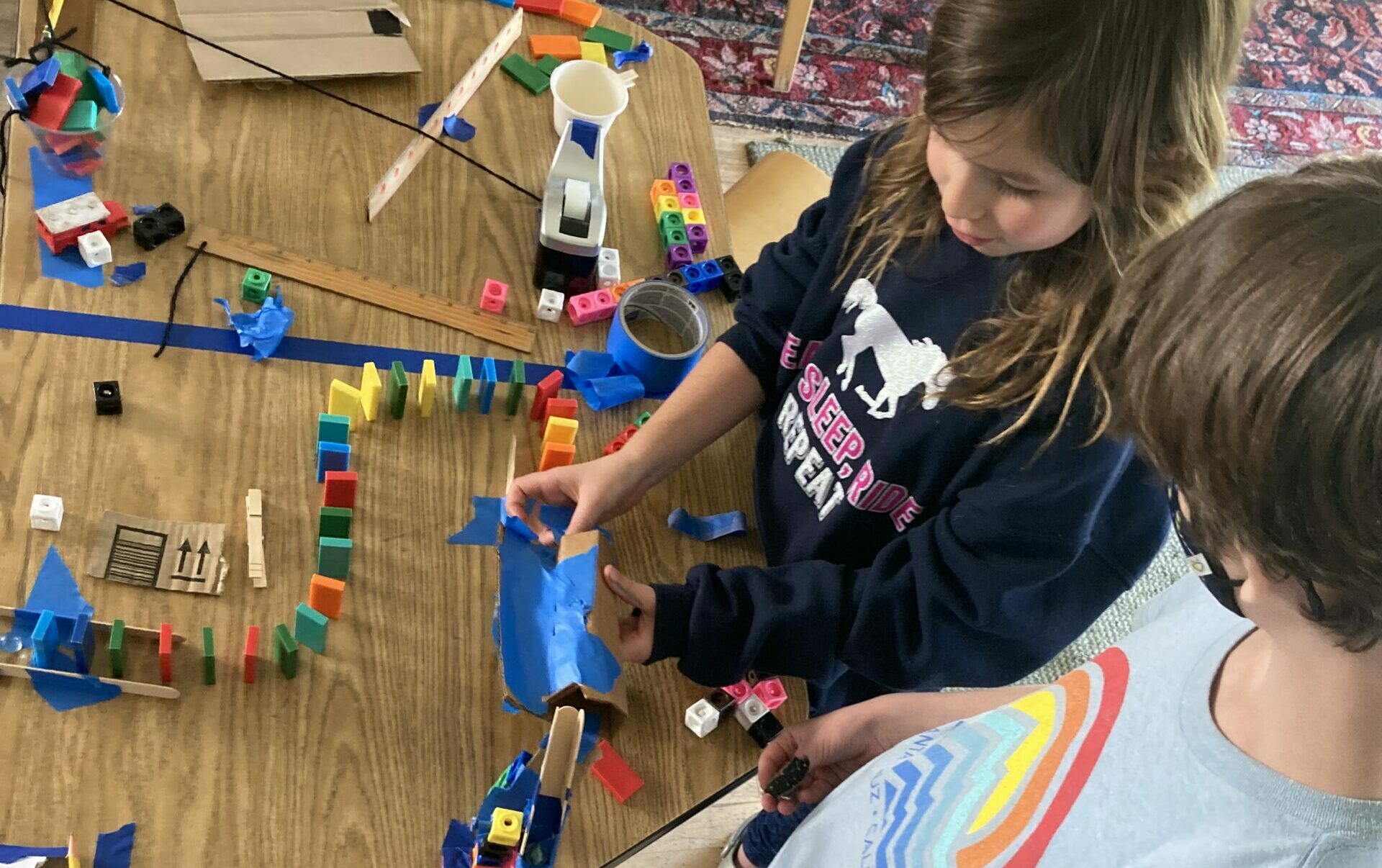
Emotions play a huge part in learning. In order to take in new concepts, students must be open and trust their environment, peers, and teachers. Walden provides this by working intensively with children on group and individual interactions, striving to create a climate of respect for differences and similarities as learners. Multi-age classes offer learners a chance to bond with teachers and peers, creating opportunities for challenge and support.
We treat social-emotional learning as an essential part of our overall curriculum. As teachers, we see evidence every day that the greatest cognitive growth occurs through social interaction. In the Middle Group, social-emotional learning begins with morning meeting where the children greet each other, learn about the schedule of the day and special events, play cooperative games and share thoughts and information about their lives. We pay special attention to teaching children positive social skills within the context of daily routines and activities. We also carefully attend to how children treat each other, and reinforce respect and caring as the basis for interactions. As we teachers demonstrate our belief in all our students’ potential for competence and goodness, the children will also feel more empathy and tolerance for, and interest in, each other.
Spanish
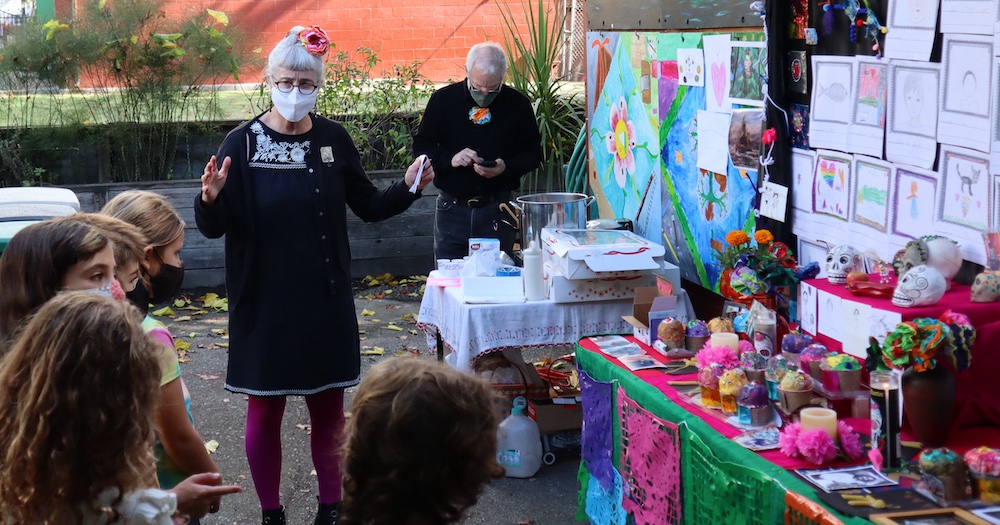
In Middle Group we continue increasing our vocabulary through thematic units on school supplies, clothing, seasons, and animal habitats. We begin exploring verbs and verb conjugations which is another very important feature of understanding Spanish. We do more writing activities but also begin to use more oral Spanish by learning how to ask and answer questions, and how to take care of our basic needs in Spanish. We continue to play games, do calendar activities, sing songs, and revel in all that we have learned thus far.
Throughout all of the grade levels there is an emphasis placed on the importance of learning another language to help us understand one another, to expand our horizons and to open doors to other ways of thinking and being. Learning another language expands our brains and hopefully instills some compassion and understanding of what it is to be from somewhere else.
Learn more about Spanish at Walden
Drama and Movement

Oh the thinks you can think: Our primary goal in the Middle Group is to create exciting, challenging performances that feature singing, acting, and dancing. Drama at this level is difficult in many ways, yet ultimately satisfying. The most important aspects of Drama and Movement are that it should be challenging, encourage development of new skills, and be fun! In other words, drama is fun!
Performances in the Middle Group have an alternating schedule between Patterns A and B. In Pattern A there is one performance in the late spring, and in Pattern B there are two performances, one in the winter and one in the spring. As children rotate through the Middle Group each child experiences both patterns. Pattern A offers room to develop a cohesive drama program at a leisurely pace. There’s more time for process, technique, anatomy of dance, drama history, games, and student input. Pattern B offers the whirlwind of rehearsal and the validation of more frequent performing. The enthusiastic feedback of an adoring audience of family and friends encourages confidence in Walden’s budding young performers. The schedule also allows for fun and games, team building, and laughter.
Learn more about Drama at Walden
Music

Middle Group students retain the spontaneity and creative freshness of young children, but they bring more highly developed skills and a growing capacity for understanding. Students are offered a wide range of experiences and skills development over the two years, including precise finger techniques, note reading, and the beginnings of formal instrumental study with ukulele and soprano recorder. Nursery rhymes, poetry, and folk and popular songs provide texts for musical improvisation and ensemble pieces. More complex and challenging games are played with increasing precision and expertise, and children are given opportunities to play, sing, and dance without the teacher’s direct participation. The following new concepts are introduced:
- RHYTHM: hearing, understanding, and expressing the beat in a variety of ways (patting, clapping, gesturing, moving, walking, playing on instrument, etc.); reading and writing basic rhythms in standard musical notation, and combining these to create original rhythms; understanding several common examples of meter (2/4/, 3/4, 6/8, 4/4 time).
- MELODY AND HARMONY: singing songs and canons in two and three parts, playing and singing the pentatonic scale using the do-re-mi system, playing and improvising in different modes, transposing songs into different keys, choral singing techniques and warm-ups, note reading on soprano recorder, strumming chords on the ukulele to accompany songs.
- MOVEMENT AND DANCE: creating dances that emphasize musical phrases, sections, and forms, such as AB, ABA and Rondo; basic folk dance steps; circle and line dances of increasing complexity.
- INSTRUMENTAL ENSEMBLE: basic technique in a variety of unpitched percussion and barred instruments; two-handed and cross-mallet melody playing on barred instruments; ensemble pieces with drone, melody, ostinato and color parts played simultaneously, new instruments introduced such as bass, ukulele, guitar and piano.
Learn more about Music at Walden
Visual Art

Art for Middle Group is a process of discovery and development of skills, kids learn more painting techniques and the use of new tools like painting knifes, hot glue guns, brayers and pliers. They continue exploring elements of art: line, color, and shape, and are introduced to texture and space. They also begin to comprehend how art is connected to emotions.
Art classes in the Middle Group start with a brief written description of the project on a board. Students read and ask questions about the project. Then a short explanation and overview of possibilities follows. Middle Groupers also learn that there are different ways to do an art project: sometimes you have an idea and while doing it, the idea changes, and other times you don’t know where the project has taken you until the end.
Children learn about a variety of artists focusing on the ideas behind the artwork more than the names of the artists to get inspired to create new work for example: mobiles, sculptures, “habitat” boxes/ family memory boxes, collage, mixed media projects, a personal map.
They start doing projects that will last more than one class. Middle Groupers comprehend the difference between vertical and horizontal and recognize the horizon line (the line between sky and land). They also demonstrate care and respect in using materials (i.e. wiping out watercolors, putting brushes away appropriately, and leaving things the way they found them). Cooperating during clean up time builds community and a sense of responsibility.
Every two months Middle Groupers have a challenging class where they are given familiar materials to explore the possible connections among them to create something new and unique. This is an opportunity to practice previously learned skills and move beyond them.
